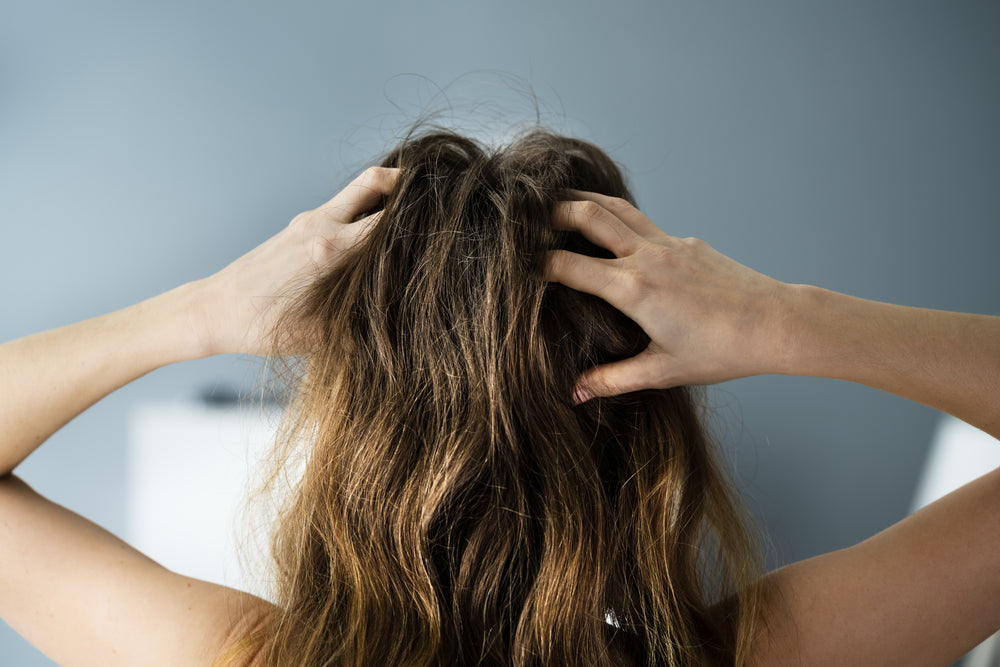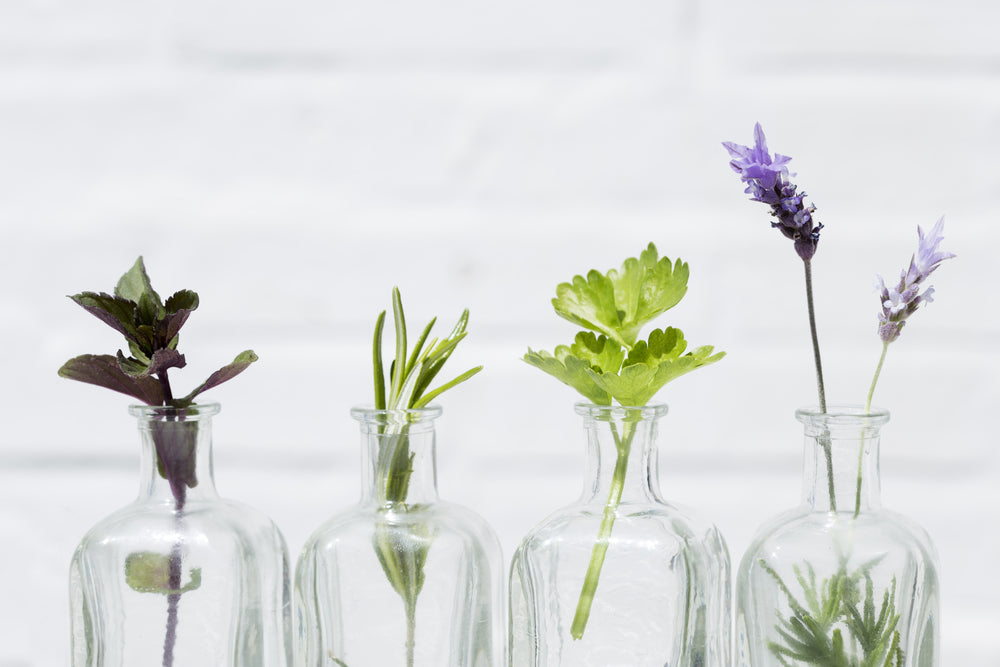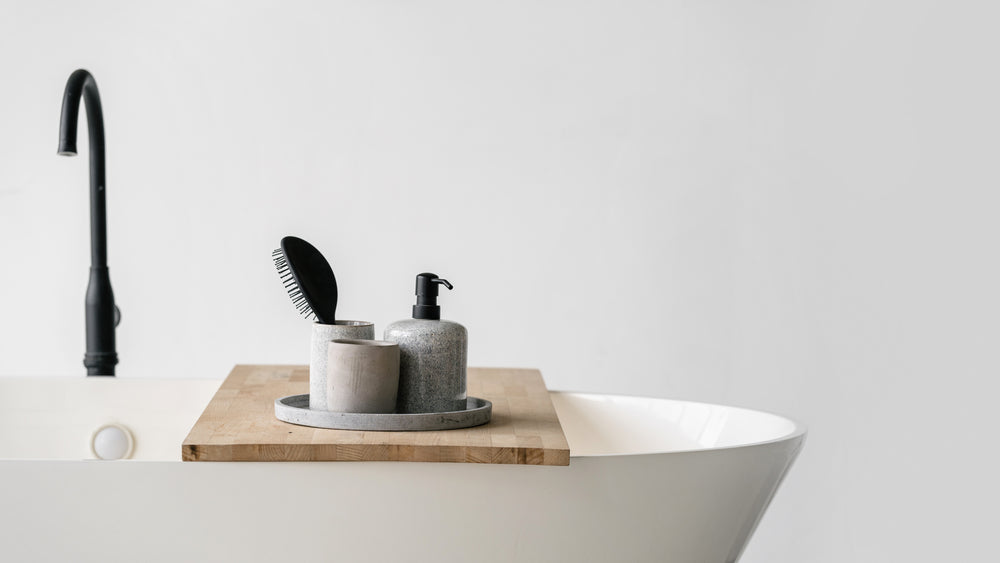Scalp conditions are frequent for many people, ranging from dandruff and flaking to severe itchiness and scalp psoriasis. Whatever your scalp troubles are, I understand the frustration of not finding a solution. That’s why in this article, I’ll explore common scalp problems and natural methods you can use to soothe your skin.

Common Scalp Conditions and Their Symptoms
Our scalps are often susceptible to different conditions that can affect overall hair and skin health. That’s why it’s essential to recognise common scalp conditions so you can promptly get a diagnosis and find methods to treat it. So, here’s a list of the top 5 conditions and symptoms to look out for:
Dandruff: this causes small flakes to appear in the hair and are sometimes visible on clothing. Symptoms include:
- Dry scalp
- Irritation and itchiness
- Visible white or yellow flakes in the hair, on the scalp, or on clothes.
Dry Scalp: unlike dandruff, this occurs because the scalp isn’t retaining or producing enough moisture. Typical symptoms are:
- Flakiness
- Itchy or red patches
- Visible whitish flakes
- Tightness of the scalp
- Roughened skin around the scalp
Seborrhoeic Dermatitis: this is also known as scalp eczema and essentially causes eczema symptoms to appear on the scalp. Common effects include:
- Crusts or a scabby scalp, especially around the hairline and behind the ears
- Scales and flakes with a yellow tinge
- Soreness, redness and inflamed patches
- Oily or greasy areas on the scalp
Scalp Psoriasis: similar to scalp eczema, scalp psoriasis causes inflammation and itchiness around the hairline and scalp. Additional symptoms include:
- Dryness
- Scaly scalp with silvery or white patches
- Burning or sore sensations
- Raised and inflamed red patches
- Cracked or bleeding scalp
Folliculitis: this condition occurs when the hair follicle itself becomes inflamed. This can result in:
- Small blisters or spots on the scalp filled with puss
- Crusting
- Soreness and tender patches
- Inflammation and red bumps
- Burning or itching
Diagnosing Scalp Conditions
After reading about some of the most frequent scalp conditions and their symptoms, you might have realised that they often share symptoms. Because of this, self-diagnosing your condition can be quite difficult, and many mistake one scalp condition for another. That’s why getting a correct diagnosis from a dermatologist or healthcare practitioner is critical, as they have the knowledge and expertise to examine your scalp and get to the root of the issue.

Treatment Options for Scalp Conditions
When it comes to managing scalp conditions, natural treatment options can offer a gentle and holistic approach. So, below are some natural remedies you can start using to help calm your symptoms:
Natural Essential Oils: Synthetic fragrances often worsen scalp conditions and make them harder to manage. Because of this, many opt for products that only contain natural fragrances from essential oils. Also, certain oils, such as peppermint, can benefit the scalp with its antimicrobial and anti-inflammatory properties.
Coconut Oil: This oil is a typical go-to moisturiser and natural solution for many conditions. Its nourishing nature can relieve itchiness and target inflammation on the scalp. You can also use it to moisturise dry areas by massaging it into your scalp and then washing it out with a natural shampoo.
Hydration and Diet: In line with my skin healing protocols, maintaining a healthy scalp starts from within. So, a nourishing and balanced diet rich in minerals and vitamins can support your overall scalp health. What’s more, staying hydrated from the inside can help your scalp and skin maintain their moisture levels.
Scalp Micropigmentation as a Solution
Sadly, some scalp conditions also affect the hair, causing hair loss, alopecia, receding hairlines and thinning, which can greatly affect self-esteem and confidence. Still, in these cases, some turn to Scalp Micropigmentation (SMP) as a solution. SMP can offer a non-invasive way to restore the appearance of hair on the scalp. It does this by using special pigments to create incredibly small dots on the scalp that resemble real hair follicles. Effectively, this process can disguise alopecia and thinning and restore an individual’s hairline, leading to improved self-esteem and overall appearance.

Prevention and Maintenance
A healthy scalp forms the foundation for stronger, more vibrant hair. So, here are some natural suggestions that can help you strengthen your scalp and nurture your hair:
Scalp exfoliation: using a gentle exfoliator once a week or as needed can help remove a build-up of product, dirt or flakes around the scalp. Doing this can make your scalp more receptive to any oils or treatments you apply later on and helps maintain good scalp hygiene.
Scalp Care Regimen: having a simple scalp care routine is a good way to prevent infections and conditions and protect your hair follicles. Your regimen could include a daily scalp massage and a weekly scalp oil before wash day. For example, consider trying out aloe vera, tea tree or rosemary oil on your scalp to soothe redness and rehydrate dry patches.
Massages: a scalp massage is a basic yet effective way to stimulate blood flow around your scalp and hairline, ensuring your skin cells and follicles receive the nutrients and oxygen they need to thrive and regenerate. You can use a soft brush or your fingers to massage your scalp in circular movements, encouraging lymphatic drainage and scalp oil distribution.
Avoid Heat Damage: Excessive use of styling tools such as hair dryers or tongs can irritate the scalp, burn your hair and compromise your overall scalp health. Consider using fewer heat styling tools or leaving longer intervals between styling to allow your natural hair and its oils to regenerate and repair.
Wear Protective Styles: Tight styles can cause stress on the scalp and pull at the hairline, leading to discomfort and even a sore and itchy scalp. That’s why many benefit from using more protective styles on a daily basis, including loose plaits, braids, buns and twists.
As with many natural solutions, it’s important to be consistent, patient and flexible - take time to observe your scalp and pay attention to your specific needs. Still, by practising these natural tips and preventative measures, you can create a nurturing environment for your scalp and promote optimal hair health.